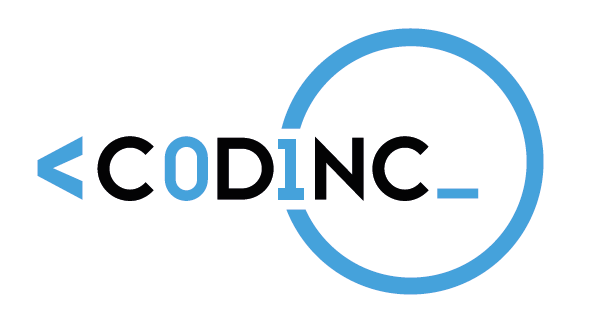
At the ALL DIGITAL summit in Bologna two young efacilitators who took part in the Coding for Inclusion-CODINC pilot in Italy traveled to Bologna to share their experiences with over 120 stakeholders in the field of digital inclusion. The young efacilitators learned how to code with in a short training of 10-15 hours. They then went on to teach young peers in elementary school the same programme themselves. In their own words they said that they "believe that it is important to have digital and IT skills because we are going towards a world where evolution is paramount." and that, "The CODINC project is important both at training and educational level also because going forward the new generations will need technology rather than lectures between teacher and student." They were accompanied by their teacher on their journey to Bologna. This article provides a short interpretation of the panel session that took place.
Pia Groenewolt, CODINC project coordinator, introduced the panel discussion about the CODINC project that took place on the 10th October t the ALL DIGITAL Summit. She welcomed and invited on stage Franco Rubinacci, CODINC trainer from the University of Naples, Mariella Mantile, secondary school professor in Naples and the two students and CODINC participants, Elvira and Alessia.
“We talk a lot about project results and today we have brought you our results!”, that’s how Franco, who moderated the panel in Italian, started the session. Franco asked the girls what they liked the most from the project. Elvira said that she enjoyed the interaction and collaboration with her classmates and with the trainers and teachers. She pointed out that it was at the same time a professional but also friendly environment! From the learning perspective, it was good to improve IT skills since they are part of our generations.
Franco then turned to Alessia and asked her to share her experience as “teacher” in the context of the CODINC training. One of the aims of the project was indeed to implement a peer-to-peer approach where secondary school students could teach their peers how to code after having undertaken the coding training themselves. “It was a difficult and complex task”, she said, “since we were unexperienced in this field, we had some difficulties to interact with them, but especially to fill the role of teachers to students that had almost our age”. She continued by remarking that this experience allowed them to see their teachers under a different perspective: “we understand better the difficulties that teachers encounter when they have to keep an eye on 20 people, each of them with different abilities and problems”.
To the question whether they would be willing to replicate the experience, Elvira said that it should be replicated since the teaching method is much closer to the students: “Learning through games, through technology, this is the future!”. Alessia also added that if she was Minister of Education, she would implement the CODINC project in schools: “Yes, I would, because it is an innovative teaching method that has proven to be more effective than classic lectures.”
“Anything else that you would like to share? Some personal thought?”, Franco finally asked to the girls. Elvira said that the implementation of the CODINC project had a very positive effect on the group dynamics in the class since they are now much more united, and they understand better the challenges that teachers encounter.
Franco then turned to Mariella, the teacher, to ask her what the benefits of implementing the CODINC projects have been, comparing it to a classical teaching method. Mariella pointed out that it is true that the project had a very positive impact on the inter-personal relationships between students and between them and their teachers: “The benefits are related to the creation of new dynamics between groups, that’s for sure! The project enhanced cooperation and collaboration between students. I would certainly apply this methodology to each school subject. Unfortunately, school in Italy is still bound to a traditional way of teaching, but students are way more motivated by new means of technology. I always say that the starting point is the fact that students have to learn and not that we have to teach them. We should then adapt to what they need”.
At end of the session, some time was allocated to questions. Marianna Marcucci, from InvasioniDigitali asked the girls whether they would have chosen this path if it had not been proposed to them by their school, since we hear a lot that girls are not interested in digital skills and technologies. They both agreed that the fact that the school proposed this activity was a good way to know more about it and therefore, why not, go for it!
- Log in to post comments






